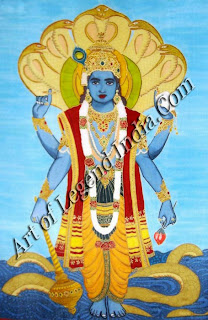 Demons
Corrupt Vedas
Demons
Corrupt Vedas
In Kali-yuga, the final quarter of the
world-cycle, the asuras stole the Vedas and used their mystical secrets to
become powerful beings. Mantras and yagnas were subverted for material gain,
their spiritual aims disregarded.
The
sapta rishis, ancient keepers of wisdom, went to Vishnu and complained
"Nobody understands the Vedas anymore. Corrupted by the demons, they fail
to direct man towards the divine. Save the texts before ignorance heralds the
day of doom."
Mayamoha Deludes Asuras
Vishnu
went to the kingdom of demons taking the form of a wily sage called Mayamoha,
the deluder, with Garuda accompanying him as a monk.
Clean
shaven, dressed in clothes of bark, with a begging bowl in hand, Mayamoha sat
amongst the asuras denouncing the Vedas. "Don't waste your time with these
high philosophies and complex rituals. They are nothing but superstitions. You
don't need them to be powerful."
With
clever arguments Mayamoha convinced the demons to abandon the Vedic way. They
stopped chanting mantras and performing yagnas. They threw the holy texts out
of their land and became heretics. The rishis recovered the Vedas and began
restoring them to their former glory.
The Divine Teacher
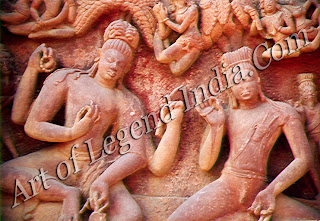 Meanwhile,
on earth, the distortion of the Vedas by the demons had caused confusion
mankind had lost touch with the divine. Life lacked direction. There was
suffering everywhere.
Meanwhile,
on earth, the distortion of the Vedas by the demons had caused confusion
mankind had lost touch with the divine. Life lacked direction. There was
suffering everywhere.
To
fight this ignorance with knowledge, Vishnu descended upon earth as the
enlightened teacher. Incarnating as Nara and Narayana, Kapila, Narada, Vyasa,
Datta, Rishabha and Buddha, the lord taught man the true nature of the cosmos.
He explained the mysteries of life and showed many ways to attain salvation.
Those
who lived by his words found themselves in the paradise of Vaikuntha, attuned
to the blissful rhythms of the cosmos. The rest, like demons, suffered the
pangs of existence.
Tapas of Nara-Narayana
On
the snowy peaks of the Himalayas, at Badrika, Nara-Narayana, two inseparable
sages, performed terrible austerities, tapas. Nobody knew what they sought.
"Maybe
they seek power," said the demon-king, Dambhodabhava. He sent hundreds of
soldiers to attack them. The sages refused to tight. Instead, they hurled
blades of grass which turned into fiery missiles killing everyone who dared
disturb their serenity.
The
god-king Indra sent hundreds of nymphs to seduce them. The sages remained
unmoved. "We can create them ourselves." So saying Nara and Narayana
rubbed their thighs and brought forth a voluptuous nymph called Urvashi, more
alluring than all of Indra's apsaras put together.
"What
do you want?" asked the gods and demons, unable to fathom the reason for
their tapas.
"We
seek the ultimate goal of existence realization and union with the divine
spirit. Power and pleasure are merely temporal delights that will wither away
someday," said Nara-Narayana.
Kapila and Jnana-yoga
Kardama
renounced worldly life soon after his son Kapila , was horn. A time came when
Kapila decided to follow in his father's footsteps.
'Why
did I lose my husband? Why am I losing my son?" wondered Devahuti,
Kapila's mother, unable to come to terms with the separation.
Said
Kapila, "Nothing is permanent in the material world. All that you see,
smell, hear, touch or taste are material things, products of prakriti. They are
transitory pleasures here one moment, gone the next. If you want something
permanent, you must look beyond the material reality and get in touch with the
spiritual reality of the cosmos, the immutable purusha."
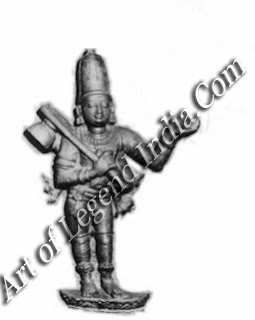 Kapila
went on to explain the structure of the world. He enumerated the two principles
which govern life eternal nil and transitory substance.
Kapila
went on to explain the structure of the world. He enumerated the two principles
which govern life eternal nil and transitory substance.
This
Santkhya philosophy became the corner-stone of nysticism and the foundation of
intellectual introspection - Jnana-yoga.
Narada and Bhakti-yoga
Even
after performing a hundred thousand yagnas, King Prachinabarhis was not happy. "What
have I done wrong? why am I not content? Why do I experience no bliss?" he
wondered.
The
sage Narada, lute in hand, came forward to solve the king's problem. "With
your rituals you are trying to control the world around you and make it work in
your 'our. But let me show you what you have really achieved."
Narada
pointed to a vast field covered with the carcasses cattle sacrificed in his
many rituals.
“Your
rites and rituals will never influence the workings he world. But for killing
these innocent beasts you will e to someday pay a terrible price."
Narada
continued, "The desire to manipulate events in one's favour is
unproductive because Vishnu, the supreme being, loves all creatures equally he
does not discriminate or favour anyone. Accept his divine intentions humbly
live life accordingly. Look at every event good or as the lord's gift, prasada,
an opportunity to discover the divine. Only then will you realise his benign
and live a life of joy."
Thos
did Narada direct the king Prachinabarhis to the path of devotion called
bhakti-yoga that leads straight to heart of Vishnu.
Veda Vyasa and Karma-yoga
The
sage Parashara fell in love with a fisherwoman called Satyavati as she ferried
him across the river Ganga. She gave birth to his son Krishna-Dwaipayana, so
called because of his dark complexion and because he was born on an island in
the middle of the river.
Satyavati's
son painstakingly compiled the Vedas, which had been lost to the world, with
Ganesha, the lord of wisdom, serving as his scribe. His work made him famous in
the three worlds as Veda Vyasa compiler of the books of knowledge.
Krishna-Dwaipayana
also wrote down the Adi Purana and the Itihasa, the book of myths and legends,
through which he propogated the doctrine of duty, karma-yoga.
Said
he, "Man must act according to dharma because dharma ensures harmony
between the self and the world around. Actions motivated by desire unravel the
cosmic fabric they also generate emotions that trap one within the material
world. Nishkama karma, selfless action focussed on duty not reward, enables one
to attain salvation without having to renounce the world."
The
followers of Vyasa became the first bards who revealed truth through tales of
gods, king and sages.
Dattatreya, the Mystic
Anasuya,
the wife of sage Atri, was renowned for her virtue. To test her, Vishnu arrived
at her doorstep disguised as a sage and asked her to feed him unclothed.
Anasuya, bound by the rules of hospitality, agreed to the strange request. But
such was the power of her chastity that when she brought the food, Vishnu
turned into an infant whom Anasuya fed as a mother, her virtue uncompromised.
When Vishnu recovered his original form, he blessed Anasuya, "You will
bear a son who will be the embodiment of Brahma, Vishnu and Shiva."
Thus
was born Datta, the son of Anasuya. He was also known as Dattatreya after his
father,
the sage Atri.
Datta
observed Nature carefully the elements, the sun and the moon, birds and
animals, men and women and gained an insight into the nature of the world.
Inspired, he went on to compose the Avadhuta Gita the song of the recluse that
explains the doctrine of detachment, vairagya.
Through
various occult sciences like Tantra and mystical disciplines like Yoga,
Dattatreya taught mankind the means to yoke oneself to the way of the cosmos.
His students called him the fountainhead of all knowledge, the supreme teacher,
Adinatha.
He
wandered around the world as a mendicant with his cow, Bhoodevi herself, and
four dogs, embodiments of the Vedas. Said Dattatreya, "You can either
remain ignorant and abuse Nature or you can learn from her and realise
divinity."
Rishabha, the Ford-finder
Meru,
wife of the noble king Nabhi of Ayodhya, dreamt of a mighty bull as she gave
birth to her son. The prince was therefore named Rishabha bull amongst men.
Rishabha
ruled his kingdom wisely, teaching man seventy-two vocational skills and women
sixty-four domestic arts.
He
had many children. His daughter Brahmi invented the script called Brahmi. His
son Bharata was a great king of India; after him the land continued to be known
as Bharata-varsha, the kingdom of Bharata.
When
he had fulfilled his duties as a householder and king, Rishabha renounced
worldly life. He crowned Bharata as his successor and went into the wilderness
to live a life of austere contemplation.
Seated
on Mount Kailasa, Rishabha reiterated the Jain philosophy, one of the oldest
doctrines of liberation that enables man to break the fetters of karma and
transcend samsara. Rishabha thus created a bridge out of the wheel of existence
and became tirthankara the ford-finder.
Buddha, the Enlightened One
Gautama,
the Sakya prince of Kapilavastu, grew up surrounded by royal comforts adored by
his loving mother. When he came of age, he married the beautiful princess
Yashodhara. Within the walls of his palace there was nothing but joy.
But
one day, as he rode through the city, he became aware of the suffering that
plagues the life of every man poverty, old age, disease and death.
He
witnessed innocent animals and birds being mercilessly slaughtered by priests
in elaborate ceremonies in the hope of relieving sorrow and ushering in joy.
In
his compassion, Gautama decided to find the reason behind suffering. "Once
I know what makes man unhappy, I will find a way to make him happy."
He
renounced his wife and child, his wealth and crown and lived a life of a
mendicant in the forest, fasting, meditating, talking to wise men, seeking a
solution to the misery of man.
He
sat under a pipal tree and refused to get up until he had found the answer. In
time he did. He realised desire was the root of all pain.
As
Buddha, the enlightened one, Gautama concluded that to be free of desire one
had to alter one's attitude towards the world and seek answers within oneself,
through contemplation and restraint. He propogated a disciplined way of life
based on compassion known as Buddhism the path of the enlightened.
Writer Name: Decdutt Pattanaik
Read More:
 Demons
Corrupt Vedas
Demons
Corrupt Vedas Meanwhile,
on earth, the distortion of the Vedas by the demons had caused confusion
mankind had lost touch with the divine. Life lacked direction. There was
suffering everywhere.
Meanwhile,
on earth, the distortion of the Vedas by the demons had caused confusion
mankind had lost touch with the divine. Life lacked direction. There was
suffering everywhere.  Kapila
went on to explain the structure of the world. He enumerated the two principles
which govern life eternal nil and transitory substance.
Kapila
went on to explain the structure of the world. He enumerated the two principles
which govern life eternal nil and transitory substance. 
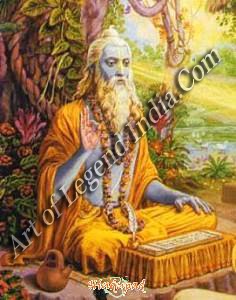
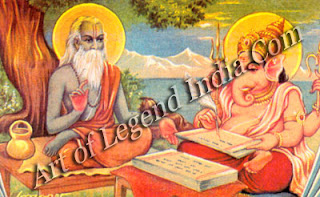
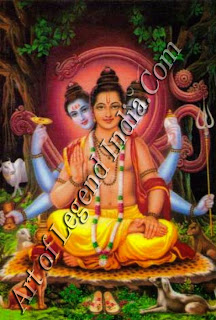
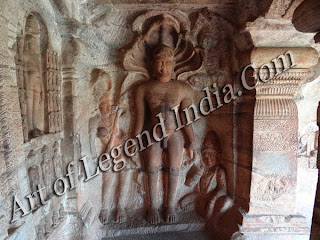
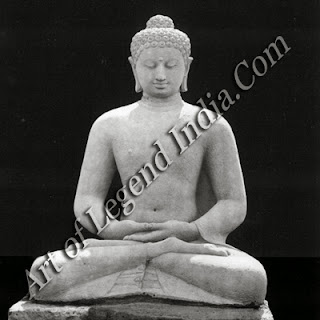










0 Response to "Vishnu Enlightens Mankind "
Post a Comment